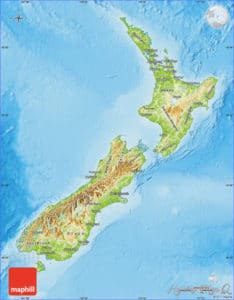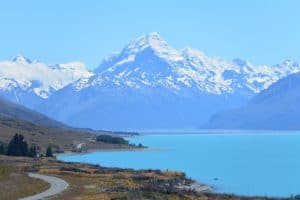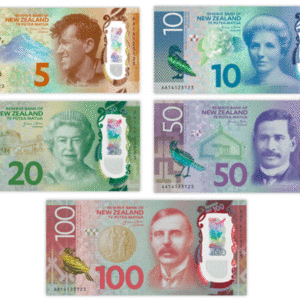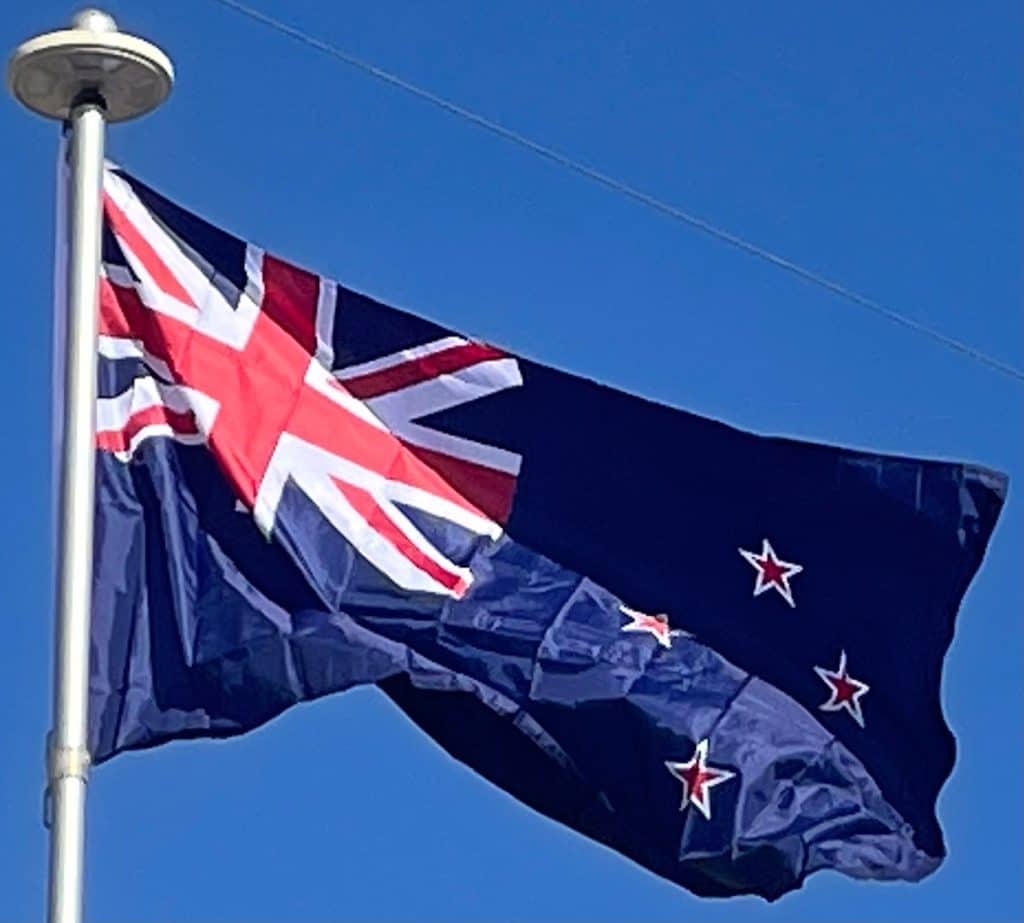
New Zealand is long and narrow—over 1,600 kilometers (990 mi) along its north-north-east axis with a maximum width of 400 kilometers (250 mi)[152]—with about 15,000 km (9,300 mi) of coastline and a total land area of 268,000 square kilometers (103,500 sq mi). Because of its far-flung outlying islands and long coastline, the country has extensive marine resources. Its exclusive economic zone is one of the largest in the world, covering more than 15 times its land area.

The South Island is the largest landmass of New Zealand. It is divided along its length by the Southern Alps. There are 18 peaks over 3,000 meters (9,800 ft), the highest of which is Aoraki / Mount Cook at 3,724 meters (12,218 ft). Fiordland’s steep mountains and deep fiords record the extensive ice age glaciation of this southwestern corner of the South Island. The North Island is less mountainous but is marked by volcanism. The highly active Taupo Volcanic Zone has formed a large volcanic plateau, punctuated by the North Island’s highest mountain, Mount Ruapehu (2,797 meters (9,177 ft)). The plateau also hosts the country’s largest lake, Lake Taupo, nestled in the caldera of one of the world’s most active super-volcanoes.
Economy:
New Zealand has an advanced market economy, ranked 14th in the 2019 Human Development Index and third in the 2020 Index of Economic Freedom. It is a high-income economy with a nominal gross domestic product (GDP) per capita of US$36,254. The currency is the New Zealand dollar, informally known as the “Kiwi dollar”; it also circulates in the Cook Islands (see Cook Islands dollar), Niue, Tokelau, and the Pitcairn Islands.

Historically, extractive industries have contributed strongly to New Zealand’s economy, focussing at different times on sealing, whaling, flax, gold, kauri gum, and native timber. The first shipment of refrigerated meat on the Dunedin in 1882 led to the establishment of meat and dairy exports to Britain, a trade which provided the basis for strong economic growth in New Zealand. High demand for agricultural products from the United Kingdom and the United States helped New Zealanders achieve higher living standards than both Australia and Western Europe in the 1950s and 1960s. In 1973, New Zealand’s export market was reduced when the United Kingdom joined the European Economic Community and other compounding factors, such as the 1973 oil and 1979 energy crises, led to a severe economic depression. Living standards in New Zealand fell behind those of Australia and Western Europe, and by 1982 New Zealand had the lowest per-capita income of all the developed nations surveyed by the World Bank. In the mid-1980s New Zealand deregulated its agricultural sector by phasing out subsidies over a three-year period. Since 1984, successive governments engaged in major macroeconomic restructuring (known first as Rogernomics and then Ruthanasia), rapidly transforming New Zealand from a protected and highly regulated economy to a liberalised free-trade economy.
